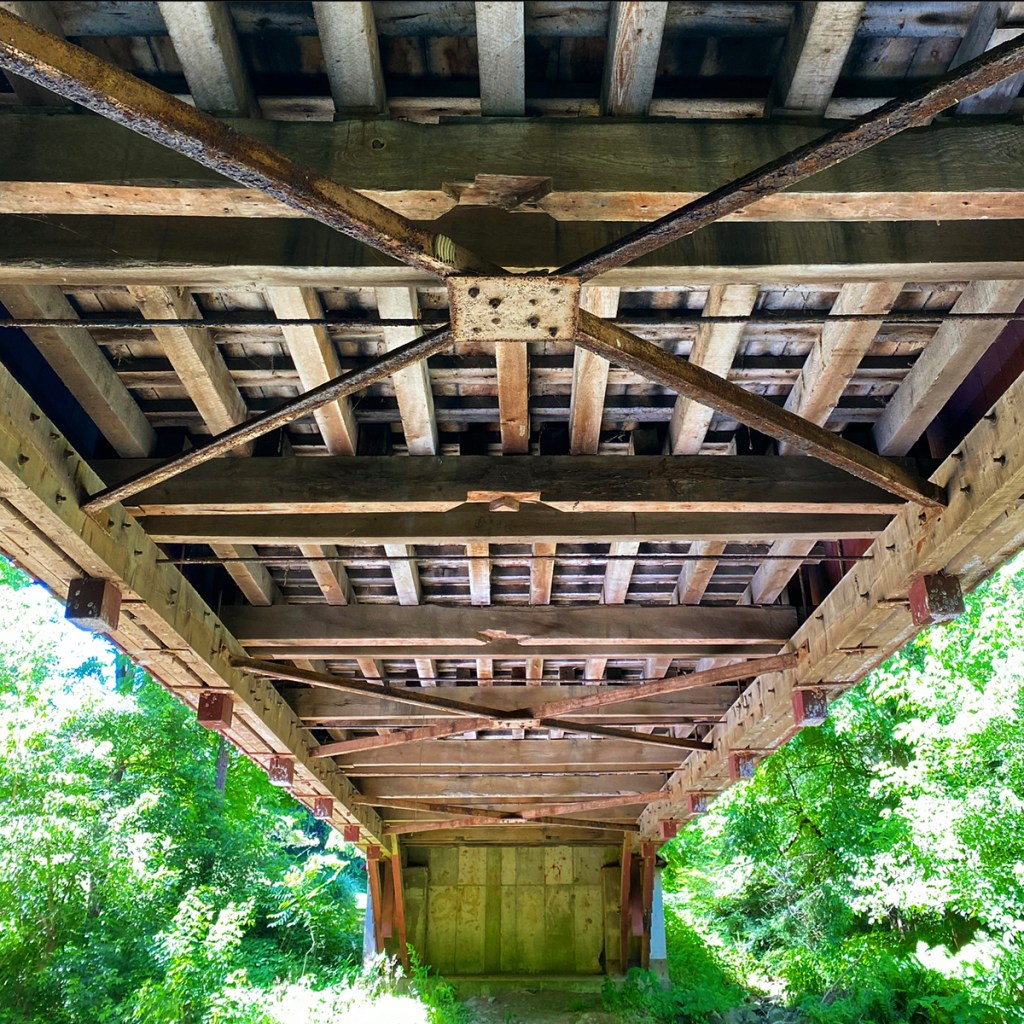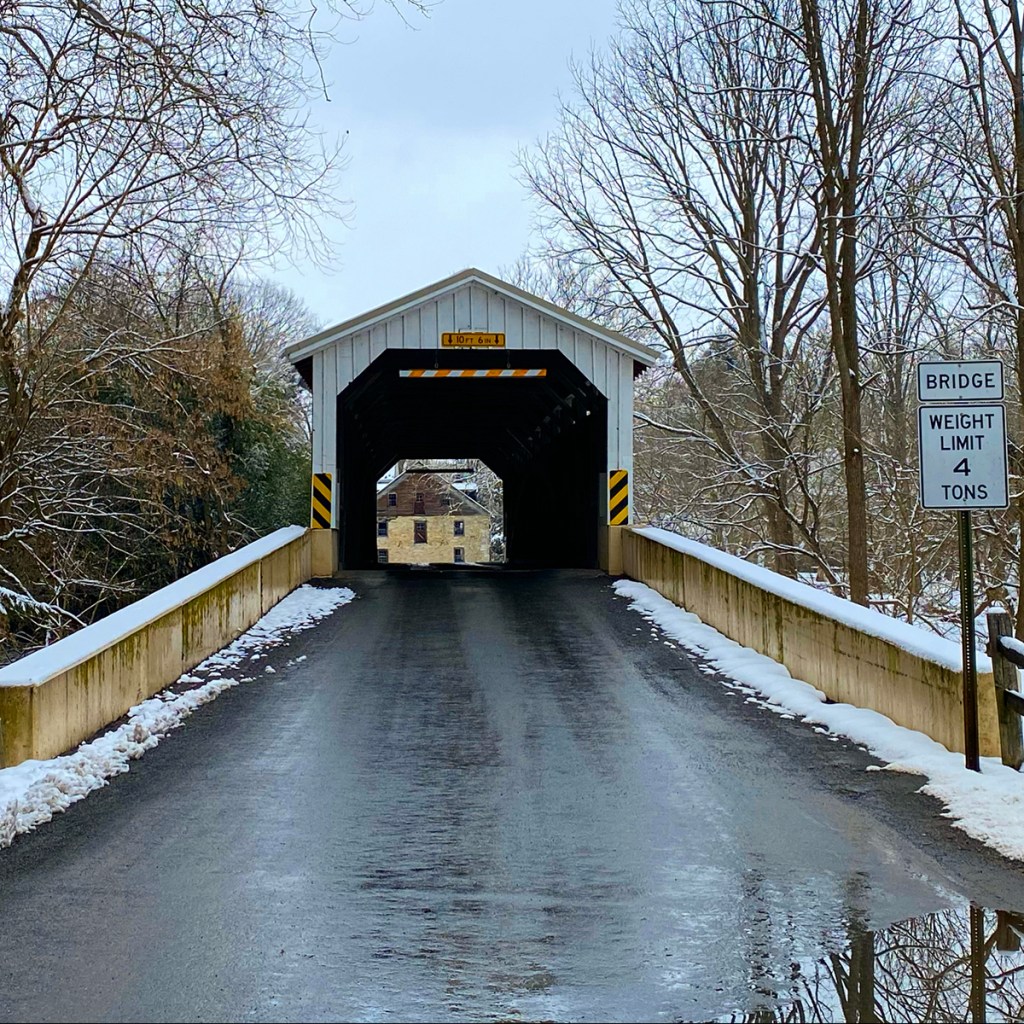A mill has been in operation at the current site of Baumgardner’s Mill longer than there’s been the United States of America. Jacob Smith built the first one as early as 1775. His three-story, 20′ x 40′ grist and sawmill were constructed from logs. By 1806, Smith replaced the structure with a larger 38′ x 40′ three-story stone mill with a single water wheel.
.
About a mile downstream, another mill was built. The earliest mill mentioned in this location was Good’s Mill (shown on the map below), built in 1737. From 1787 to 1792, Casper Shirk owned and operated the mill, then Johannes Eshback, Michael Wengert in 1798, David Harnish in 1810, and Isaac Hainey in 1813.
Over the years, it burned down so many times it became known as “Burnt Mill.”

Meanwhile, Jacob Smith sold his mill to Abraham Mylin in 1836. Mylin either enlarged the 1806 mill or started over, giving the three-story structure an even larger 40′ x 60′ footprint plus adding a second water wheel. Mylin also diverted water from the Pequea Creek to create a reservoir to ensure a more constant power supply.
A few years later, in 1842, Burnt Mill enlarged its millrace, requiring more water to turn its wheel. That’s when the trouble began.

Mylin’s Mill would be holding back water just when the downstream mill needed it most. One thing led to another, and soon there was a feud between the two millers.
In the midst of this, the covered bridge was built in 1860 by Davis Kitch for $1,284. That’s only $40,466.42 in today’s money. Talk about cheap labor costs!

Today the county-owned bridge is commonly referred to as Baumgardner’s Covered Bridge, although its official designation is the boring “Pequea #10 Bridge.”
As recently as 1987, the bridge was restored after it was damaged in a flood from the previous year. During this restoration process, which cost $200,000, the bridge was raised four feet and lengthened by nine feet to protect it from damage in future floods.

Interestingly before cars, it was customary for the local farmer to snow a covered bridge after each winter storm so sleighs could slide through. For this service, he earned $10 a year. At this time, the unique location of Baumgardner’s Cover Bridge added an interesting twist to this job.

By the time that Thomas Baumgardner came to own the mill in 1870, the operation had switched hands several times. Mylin sold to Benjamin Harnish in 1857, who sold it in 1868 to John Good. Baumgardner held on to the property and, incidentally, gave the covered bridge its name.
In 1877 Burnt Mill, true to its name, burned down yet again. But like the Phoenix, it arose from its ashes to continue operations.

Over the years, Baumgardner Mill continued to change hands, including, including Jacob Herr, Henry Hess, J.H. Baumgardner, and Edwin Diffenderfer.
By the early 1900s, the feud between Burnt and Baumgardner Mill’s owners was going full blast.

Around this time, Burnt Mill built its dam so high that the water backed up all the way to Baumgardner’s. This, in turn, slowed his water wheel, preventing efficient operation. To get even, the miller at Baumgardner would close his water gates cutting off the downstream current. Next, he would fully open his gates flooding the lower mill.
Eventually, one midnight, the dam at Baumgardner’s was dynamited in response. Some say Burnt Mill’s dam was also blown up as a form of retaliation. However, the worst was yet to come.
Edwin Diffenderfer, now the owner of the Baumgardner’s Mill, was killed by the internal waterwheel late one night in 1905.

Given the raging feud between the two millers, foul play was immediately suspected. In fact, Diffenderfer’s son said his father had been threatened so often he was convinced it had been murder. The case was allegedly even brought to court. However, nothing was ever proven.
Neither mill could survive the coming modernization in the industry, and soon both ceased operation. By the late 1980s, Baumgardner’s Mill was being used for farm storage. Meanwhile, Burnt Mill, shown below, has been remodeled into apartments.
.
If you drive north on Bylerland Church Road and crossing Baumgardner’s Covered Bridge, you can see the old gray stone mill. One arch has been filled in with stone, but the other is still open. This held the bearings for the wheel shaft of an undershot water wheel, a less efficient type of wheel that goes around backward.
When you are beside the mill, look at the large brick-bordered arch. Here the water, 14 feet deep, left the mill and flowed through the tailrace back to the creek. The ditch is still visible.

You can find the Baumgardner’s Mill at approximately 88 Covered Bridge Road, Pequea, PA, or click here for its exact GPS location. Please remember that the mill is private property and should be enjoyed from inside your car.
Never Miss a New Post
Never miss a new article by signing up for email updates below. Be sure to follow Uncharted Lancaster on Facebook or Instagram for additional exclusive content.
-
 1875 map of Pequea Township, Lancaster County, PA$14.00 – $27.99
1875 map of Pequea Township, Lancaster County, PA$14.00 – $27.99
Read More
The forgotten winter tradition of ‘snowing the bridge’

Before cars, it was customary for the local farmer to snow a covered bridge after each winter storm so sleighs could slide through. For this unique service, he earned $10 a year. Click the link to read more.
-
 William Wagner’s 1821 Map of Lancaster County$24.99 – $44.99
William Wagner’s 1821 Map of Lancaster County$24.99 – $44.99
My Great Great Grandfather, Davis Kitch, built the Baumgardner bridge when he was 23 years old. He built several in Lancaster County and one in Snyder County, the Klinepeter Bridge, which still stands today and is basically entirely original. He did many construction jobs for the city including the laying of the first sidewalk around the courthouse. He was also responsible for installing many of the water and sewer lines in Lancaster as well as the construction of Reservoir Park and oversaw the construction of the reservoir at Buchanon Park. He died in a tragic blasting accident building the railroad line running through Kinzers to Lancaster at the age of 59.